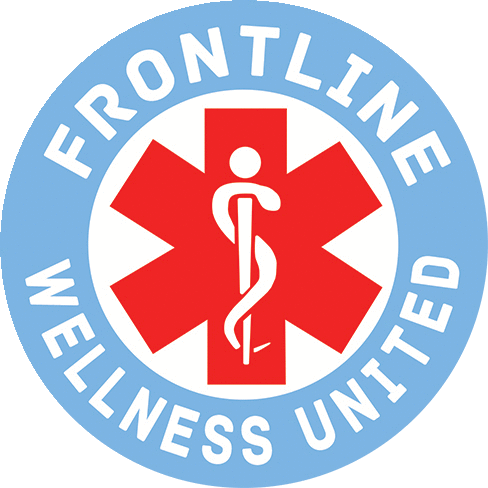Triage for Mass Casualty Incidents
Triage for mass-casualty incidents is no different for a nonviolent civil-resistance action than it is for a natural disaster. Not in the sense of how to assess a patient. What's different is that medics should practice a heightened awareness for scene safety, especially for situations in which (for example) troops are actively firing on protestors, macing protestors, etc.
Just as you'd perform triage after a mass-shooting, earthquake or hurricane, personal safety comes first. You can't use your training to save others if you allow yourself to become a victim. So in order to protect yourself and others, it might first be necessary to move patients out of harms way (being very cautious and practicing good cervical/spine-immobilization technique if you suspect the patient may have a head or spinal injury).
Maced protestor, Dakota Access Pipeline protests, Nov. 2, 2016, North Dakota.
In any mass-casualty incident in the U.S., it's wise to immediately call 9-1-1 in order to get additional help. But please be aware that historically in the U.S., when injuries have resulted from law-enforcement actions against protestors, those officers may prevent paramedics and other providers from entering the scene or delivering care (see "Because of the blood on the tracks").
Don't assume, in those circumstances, that help is coming. Begin delivering care according to the procedures listed below, and stay within your scope of practice.
Taggart Long, our training director, uses this mnemonic to help speed triage and keep a medic safe:
1. It's all about me. (Am I going to get hurt if I step into this situation? What can I do to reduce the risks?)
2. What happened to you? (Look around. Are there threats present? Is something about to change that might increase the risks?)
3. Don't get it on me. (Put on your non-Latex gloves. And a mask if you have it. If you're downwind of police who are spraying mace or other chemical irritants, you're going to have to either use a gas mask or move upwind. Take the necessary precautions to protect yourself.)
4. Are there any more? (Do a thorough scene assessment. If you take time to treat minor bleeding for one patient, another patient with an obstructed airway or severe bleeding might die in the meantime. Don't lose focus of the fact that you first have to assess the severity of wounds and conditions among multiple patients before beginning intensive and sustained treatment on a patient.)
5. Is the patient dead or alive? (Now that you've done a complete scene assessment and you've taken precautions to protect yourself, it's time to begin assessing patients and marking them according to their status.)
FEMA (U.S. Federal Emergency Management Agency) protocols dictate this system for marking patients during triage:
Immediate (I): The survivor has life-threatening injuries (airway, bleeding, or shock) that demand immediate attention to save his or her life; rapid, lifesaving treatment is urgent. These survivors are marked with a red tag or labeled “I.”
Delayed (D): Injuries do not jeopardize the survivor’s life. The survivor may require professional care, but treatment can be delayed. These survivors are marked with a yellow tag or labeled “D.”
Minor (M): Walking wounded and generally ambulatory. These survivors are marked with a green tag or labeled “M.”
Dead (DEAD): No respiration after two attempts to open the airway. Because CPR is one-on-one care and is labor intensive, CPR is not performed when there are many more survivors than rescuers. These victims are marked with a black tag or labeled “DEAD.”
For small civil-resistance actions with few casualties, this might seem like overdoing it. But our guidelines are based on global circumstances, not exclusively on the 'average' resistance action in the U.S.
Massive protests, strikes and civil-disobedience actions in other nations have sometimes resulted in hundreds of casualties, including deaths. We plan for the worst, train for the worst, and scale up how we do assessment and treatment according to how severe the circumstances are. If there are very few casualties, or you have nearly as many medics on-scene as you do casualties, you may not need to mark patients.
FEMA estimates that 40 percent more lives could be saved in mass-casualty incidents with simple First Aid/CPR and AED use. Failing to use good triage procedures increases both the severity of harm to patients and (potentially) the number of lives lost. So it's important to follow these steps if your actions are going to be truly effective.
1 Check the scene for threats. Don’t take unnecessary risks. Wear a protective mask and non-Latex gloves.
2 Identify yourself to victims: “Hello, can you hear me? I’m Hannah, I’m trained in First Aid and CPR. Is it OK if I touch you?”
3 If the victim appears to be unconscious or about to lose consciousness:
• check airway/breathing:
• position the airway
• look, listen and feel
• check breathing rate. If it’s above 30 per minute, the patient may be in shock. Maintain the airway. Tag “I”
for immediate or treat if there are no other casualties.
• if breathing is below 30/minute, go to Step 4.
4 Check circulation/bleeding:
• control bleeding with pressure, pressure bandage or tourniquet
• check circulation using blanch test (press on a fingernail and see whether a normally white nail bed turns
red, signifying the patient is circulating blood) or a radial pulse test (check for pulse at the inner wrist)
• note whether pulse is present, is rapid or abnormal
• if there’s no pulse, tag “I” and treat for bleeding and shock
5 Check mental status. The patient should be “oriented x 4” (oriented to self, time, place, circumstances).
Ask:
• What’s your name?
• What day is it?
• Where are you?
• Why are you here/what just happened to you?
6 Ideally, you’re doing the triage, and a treatment team is following along behind you. Move to the next patient.
For more information, or to offer comments, contact us here.


